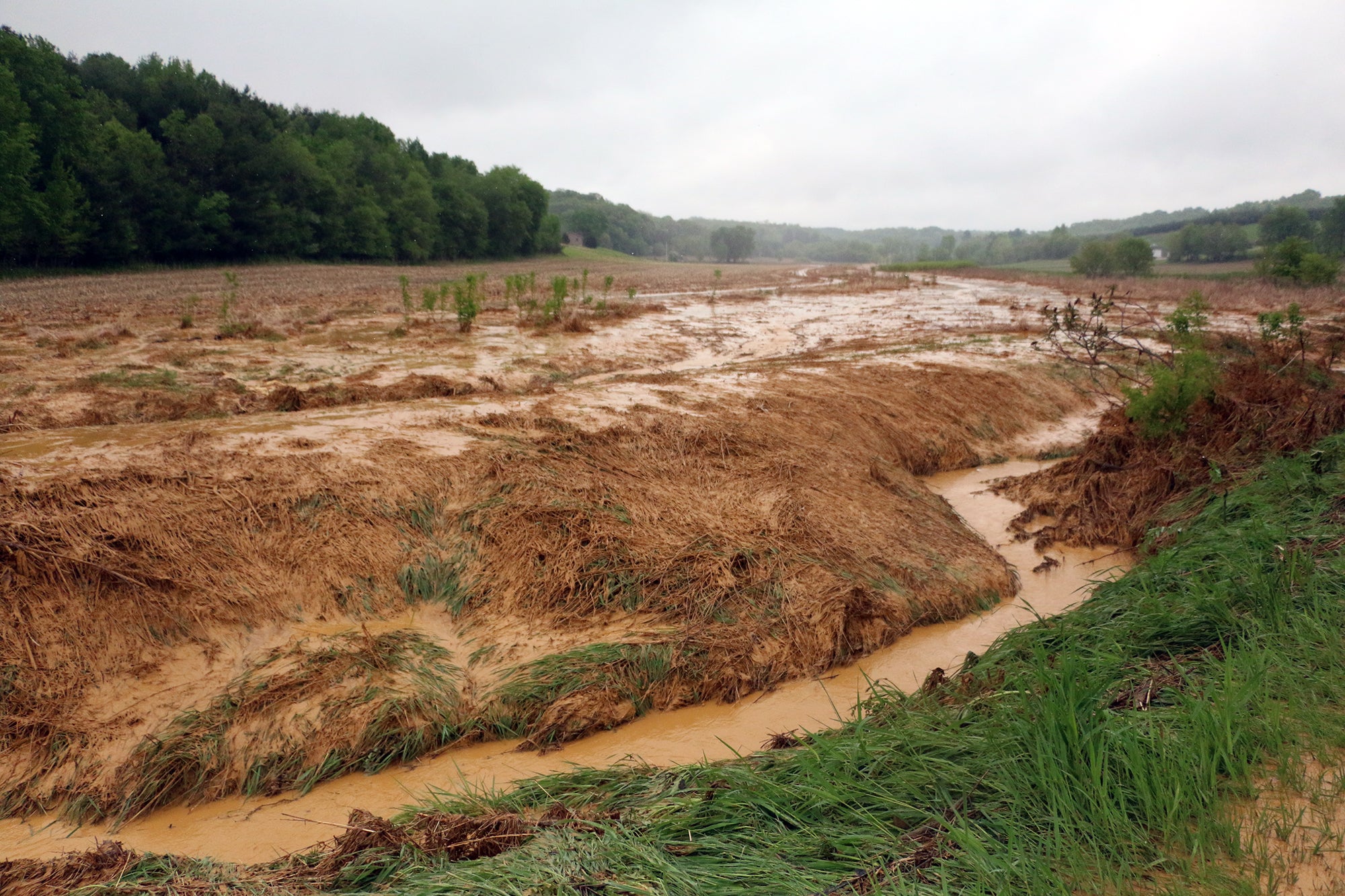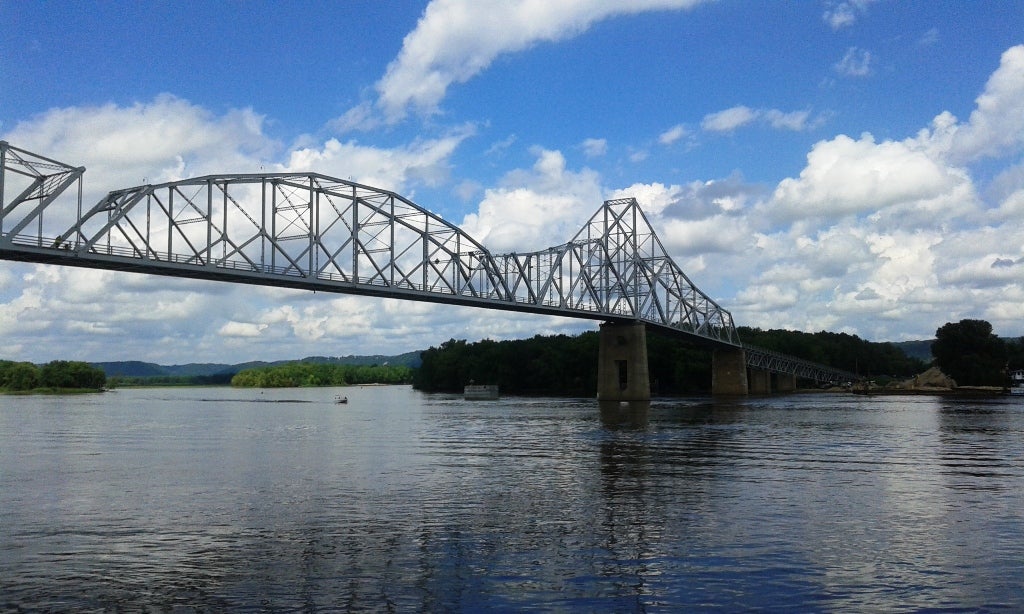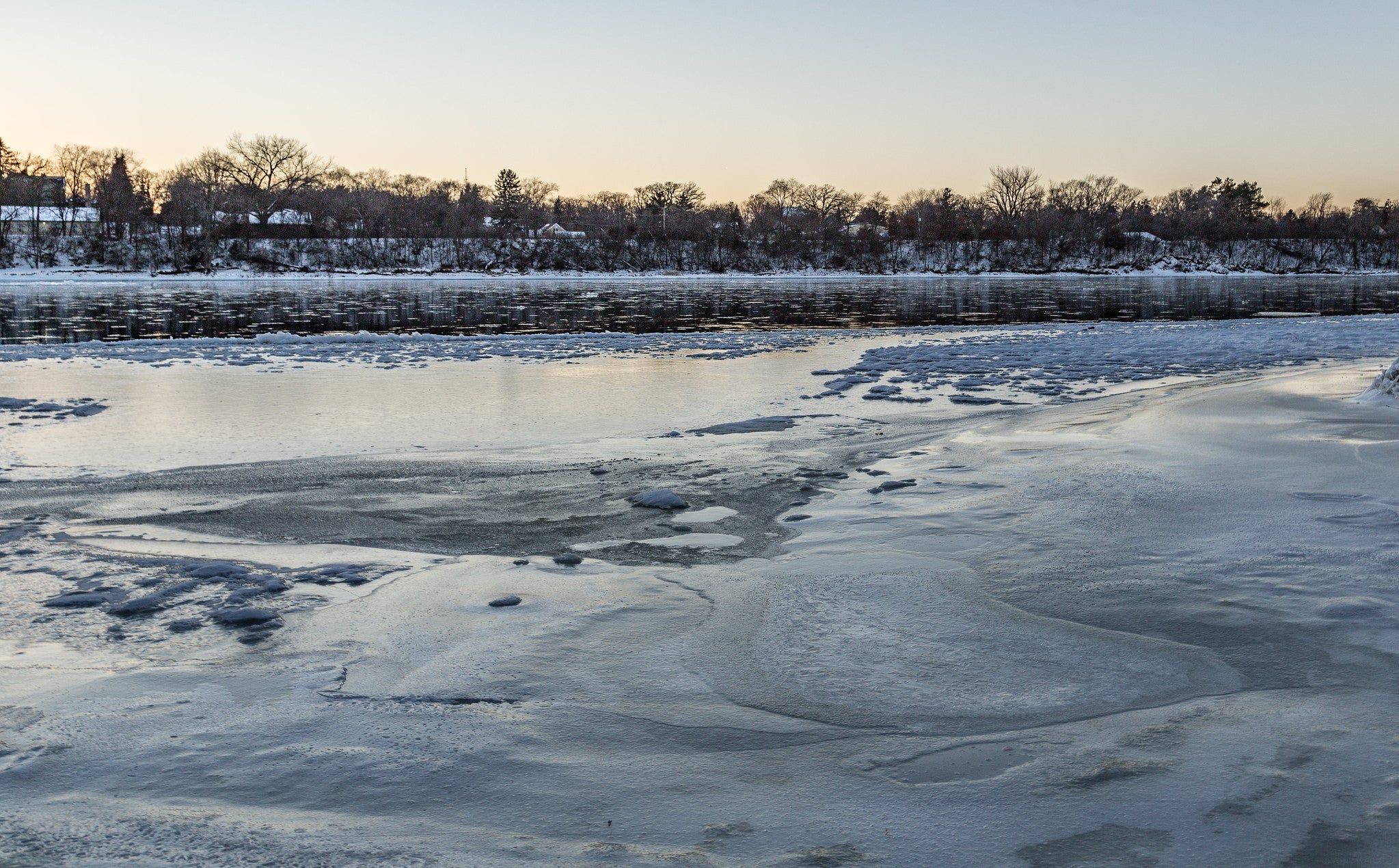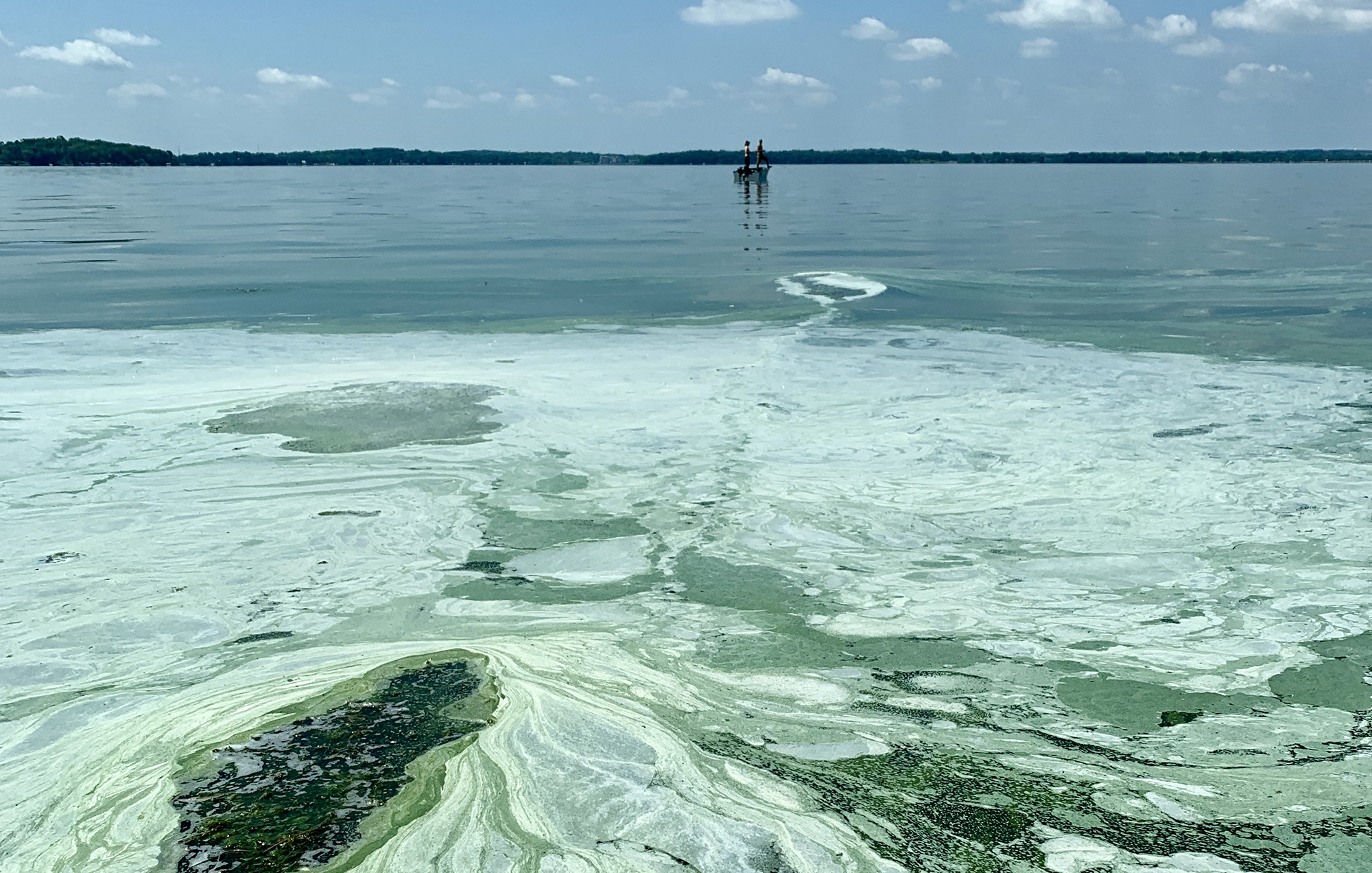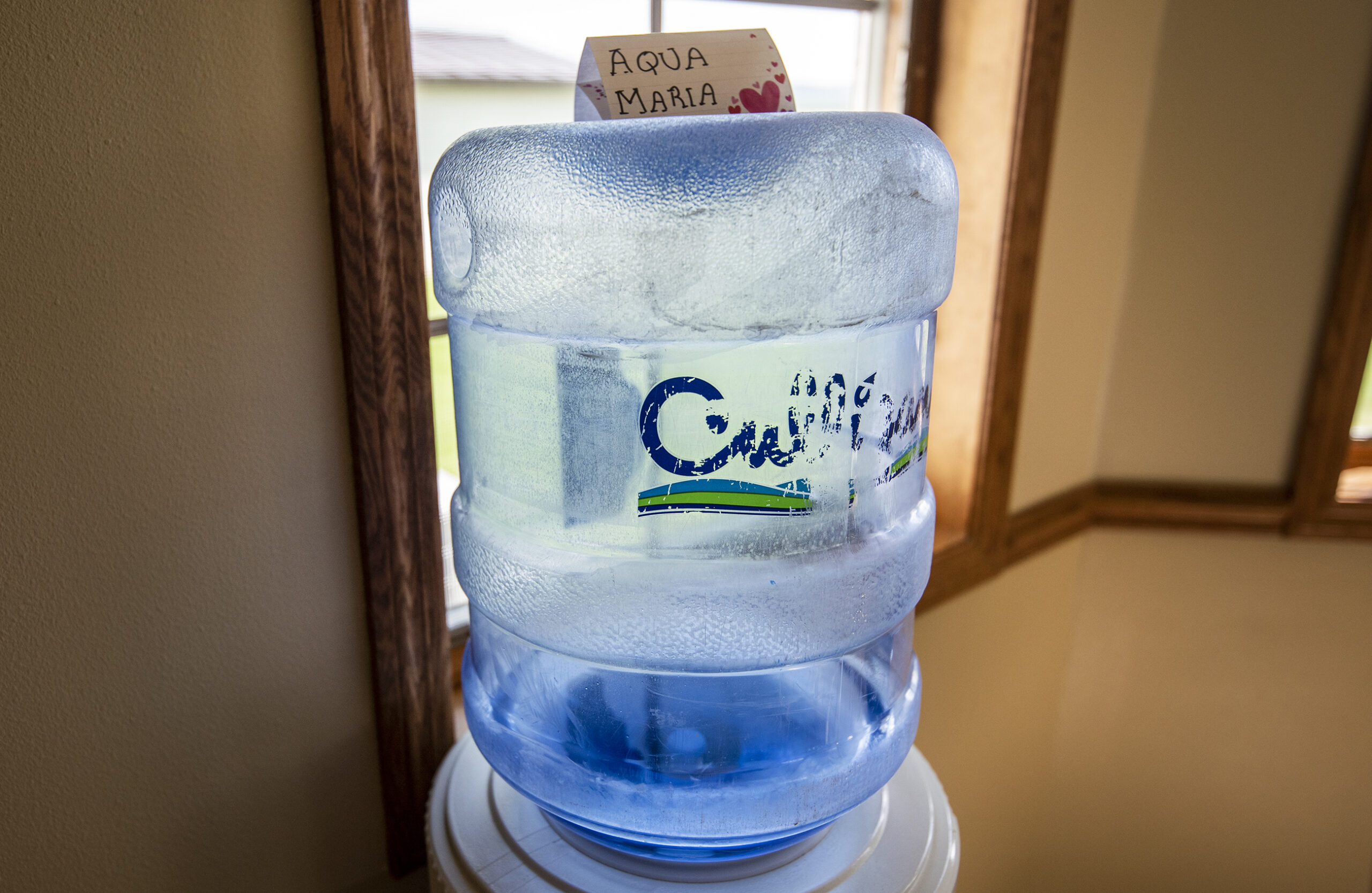Water that spilled from a frac sand mine last month contained high concentrations of heavy metals including arsenic, copper and lead. But experts say early test results indicate that much of the heavy metals settled out of the water soon after it entered a nearby creek and the Trempealeau River.
Hi-Crush drained 10 million gallons of water used to wash frac sand from a holding pond May 21 in order to rescue a worker who had been submerged in a bulldozer for two and a half hours. The water rushed down a valley, flooded farm fields and covered a driveway before it entered an unnamed creek on Poker Coulee Road in the Town of Lincoln, eventually emptying into the Trempealeau River.
The company and the state Department of Natural Resources took samples of the water hours after the incident with initial results released by the agency Wednesday evening. The DNR found arsenic concentrations at 67 parts per billion, copper levels of 2,340 parts per billion and lead concentrations of 1,440 parts per billion where the sediment-filled water from the mine entered the creek. Water samples collected up stream on the creek and Trempealeau River — in contrast — showed concentrations of those metals in the single digits.
Stay informed on the latest news
Sign up for WPR’s email newsletter.
Water samples taken by the DNR 50 yards downstream of where the creek on Poke Coulee Road meets the Trempealeau River showed much lower concentrations of metals than what was found in the water leaking from the mine.
The DNR would not agree to an on-the-record interview for this story. University of Wisconsin-Milwaukee associate dean at the School of Freshwater Sciences Tim Grundl said that concentrations of the metals quickly dropped once entering the larger waterways is not surprising.
“If you look at what came out at the source of the spill and what entered the Trempealeau River for instance, large amounts of the solids looks like they’ve precipitated out and are at the bottom,” said Grundl. “You’ve got to realize that these numbers that are quite high include the solids that are in the water; and if you’re talking about a danger to a person from drinking water, all those would be filtered out.”
That said, Grundl says there is a chance that the metals could become dissolved and still find their way into the water column in the creek and river.
“My concern, if any, over time would be that if there’s a blanket of these solids on the creek bottom or the Trempealeau River bottom that there’s some potential for some leakage up into the water column over time,” Grundl said.
The DNR said it’s continuing to collect water samples at the site, the creek and the Trempealeau River. DNR Spokesman Jim Dick didn’t say whether the agency has taken samples of the bright orange muck that blanketed farm fields and parts of the coulee after the spill last month when asked via email.
A statement from Hi-Crush emailed to WPR said it was encouraged by initial test results taken downstream from where process water entered the creek and river. They included a list of bullet points of what they have done so far, and continue to do to address the situation.
- The DNR’s initial test results are promising and confirm concentrations at the Trempealeau River meet surface water quality standards. Further, the WDNR continues to report no fish kills.
- Hi-Crush provided WDNR initial sampling results, which seem to correlate well with their initial results.
- We also performed sampling for acrylamide and, as initially presumed, there was no detect for acrylamide.
- We have done additional sampling, but it is not known how soon we can expect those results. Regardless, we do not expect further sample results to show any issues of concern for the community.
- Hi-Crush continues to contribute significant resources and is making steady progress toward cleanup and remediation.
This isn’t the first time water samples from ponds at frac sand mines have gotten the attention of concerned citizens and the DNR. In 2013, samples taken from process water ponds showed similarly high levels of aluminum, arsenic and copper compared to what spilled during the Hi-Crush rescue.
In response, the agency announced in 2016 that it would conduct a groundwater study to see if high concentrations of metals in the process water ponds was leaching into groundwater and putting nearby private wells at risk. In April of 2016, DNR industrial sand mining sector specialist Roberta Walls said the metals were of concern to the agency.
“And we are seeing presence of those in the process water ponds … to the extent and degree (that) those are the types of things that we need to take a closer look at,” Walls said.
A webpage associated with the study says it was launched last fall. The page hasn’t been revised since this February.
Another study launched by the Wisconsin Geological and Historical Survey showed the metals occurred naturally where layers of sandstone known as the Tunney City and Wonewoc formations meet. Geologist Jay Zambito told WPR in October 2016 that it’s likely those metals are locked up in minerals within the sediment that binds frac sand grains together. He said it’s possible the mining process frees the metals.
“You might be exposing minerals that can easily break down and those minerals — if they have trace metals present and those trace metals get into the water — the surface water then becomes poor quality and then it interacts with the groundwater, the groundwater then becomes lesser quality,” said Zambito.
© Copyright 2024 by The Associated Press. All rights reserved. This material may not be published, broadcast, rewritten or redistributed.

